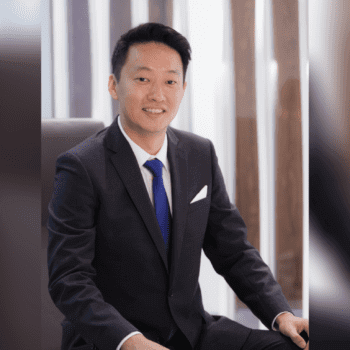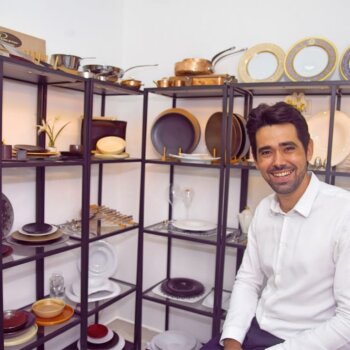According to the Global Innovation Index 2013, Singapore ranks a respectable 8th worldwide and 2nd in Asia. But dig a little below the surface and less attractive figures start to emerge. While Singapore ranks highly on certain sub-indices that comprise the overall score, it only ranks 18th on output and 121st on innovation efficiency.
This indicates that while Singapore has a conducive environment for innovation, output in the form of knowledge creation and production of creative goods and services still has far to go. Much discussion in the media centres upon how building an innovative culture involves dealing with failure. It is oft quoted that “failure is the mother of success,” which indicates that by trying and failing, organisations can innovate and succeed. How true is this?
Some key assumptions underlie this mode of thinking:
- Failure causes innovation;
- There is a culture that embraces failure;
- The ecosystem is efficient and allows experimentation with ideas and their subsequent failure to happen quickly.
Failure for failure’s sake
Let’s examine each of these in turn. The first assumption is that failure leads to innovation, that is to say, the two are causally linked. While there certainly is a correlation between failure and innovation, it is far from certain whether failure actually leads to innovation.
Failure may be a feature of innovative organisations, but are these organisations innovative because they fail often? Henry Doss, a venture capitalist, argues in an opinion editorial in Forbes magazine that this is not the case. In fact, it is the frequency of trial in these organisations that leads to innovation. According to him, it is because these organisations are willing to try many new things, “which nearly guarantees a large number of failures […] and a larger number of successes.”
Failure can nowadays be seen almost as a badge of honour for entrepreneurs and organisations seeking to be innovative. Encouraging failure for its own sake is self-defeating. The stage must first be set to accumulate knowledge from past failures for use in avoiding repeating mistakes and in reducing the risk of new endeavours.
Doss warns that focusing on failure alone as a feature of future innovation blinds us to the importance of the underlying dynamics of innovative cultures. He says that “It is not the frequency of failure that is important but rather the conditions that allow for innovation success… Under these conditions failure is seen not as a necessary outcome, but as an acceptable and well-understood feature of risk.”
Taking the sting out of failure
This leads us to the next point that a culture that embraces failure is instrumental to reaping the benefits. The stereotypical Asian mentality is known to be adverse to failure because it is viewed as a ‘loss of face’, something to be covered up lest it bring shame upon individual or organisation.
Nevertheless, over the past decade, the Singapore government has emphasized the need to change this conservative mindset. The local newspapers regularly shine a spotlight on successful entrepreneurs and their journey from failure to innovative success, in a bid to reduce the negative impression associated with failure. But to move this noble intention beyond simply paying lip service, Singapore institutions need to put systems in place to take the sting out of failure.
In a blog post on the Harvard Business Review, Doug Sundheim, a consultant, argues that the emotional toll of failure must first be dealt with before innovation can happen. The first step would be to define a smart failure, he writes. What are smart failures? According to Sundheim, “These are the thoughtful and well planned projects that for some reason didn’t work. Define them so people know the acceptable boundaries within which to fail. If you don’t define them, all failure looks risky and it will kill creativity and innovation.”
The next step would be to reward smart failures in addition to successes, Sundheim argues. He cites the example of Indian conglomerate Tata’s Innovista programme and their “Dare to Try” award, which goes to the most thoughtful and well-executed failures. By rewarding not only the best innovations of the year but also the best attempts, Tata is gradually changing people’s thinking about the value of taking a risk, Sundheim believes, which leads to a greater volume of innovative ideas.
Avoid locking up great talent in flawed projects
Once the cultural paradigm shift is underway, innovators need to be able to try many ideas, fail often, and have a system in place to recognise the merits of these attempts, in order to learn from failure. In addition, the ecosystem should be efficient in letting sub-par ideas fail fast.
In Singapore, there are increasing resources available for entrepreneurs, particularly from the government. As discussed at the launch of OBR-Singapore earlier this month, the Singapore government is committed long term to building a vibrant biotech ecosystem. While government support is instrumental, one of the talking points raised during the panel discussion was whether the state was artificially propping up companies that might otherwise fail when exposed to free market forces. Indeed, there are some who believe that while it is very easy to start a company in Singapore, it is now almost too hard for companies to fail.
In a separate post on the Harvard Business Review, Scott Anthony, a consultant and investor, raised a case study where a young Singaporean entrepreneur came to him to raise funds for his business. While Anthony and team felt the entrepreneur was excellent, his business idea was not. This analysis was shared by others in the local VC community, Anthony says, but apparently not by the government, who gave the entrepreneur a grant to keep his business going for another 18 months.
Anthony argues that the greatest risk of an ecosystem where ideas cannot fail fast is that great talent ends up being locked into fatally flawed projects. He concludes, “Failure is a necessary part of a flourishing innovative ecosystem. Not every idea is destined for greatness. A talented individual working on an idea with fatal flaws by definition isn’t working on an idea with transformational potential. When great talent is stuck working on the wrong things, the ecosystem as a whole suffers.”
written by Oxbridge Biotech. see more.





























